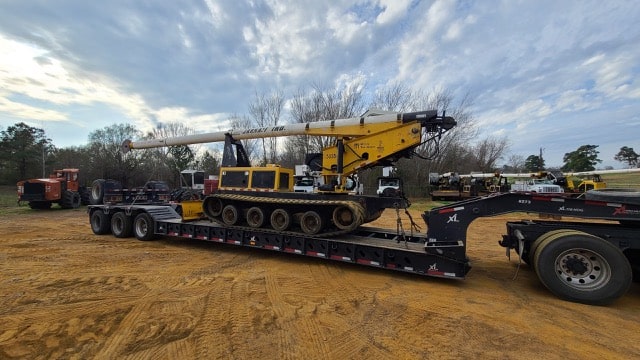What is an Oversize Load in Trucking?

William Thomas / January 2021
What is an Oversize Load in Trucking?
An oversize load in transport is any load that exceeds the maximum legal dimensions and weight. Each state usually defines the weight and size limits in North America and Mexico, or province in Canada. Technically, each state has a varied definition of what an oversize load means. For trucking companies that deliver heavy equipment, oversize loads are a common occurrence as they haul loads through different highways. Since the term oversize is relative and the drivers are subjected to varying regulations as they pass across different states and provinces, it’s imperative for a trucking company to have accurate information about oversize load restrictions and the requirements to comply with before embarking on a towing and delivery process.
A trucking vehicle moving an oversize load is usually a semi truck with a specialty trailer, such as an RGN or lowboy. Even though oversize load dimensions may vary significantly across different states, legal width in most states is 8 ft. 6 in. and a height not taller than 14 ft. 6 in. Any loads exceeding these measurements are, by definition, oversize loads. Legal width and height have a small margin, as they are usually based on the standard width of major highways (typically 12 feet across all state highways). The length is the most variable dimension, and it is usually based on the type of trailer a trucking company is using. California trucking regulations, for example, any load exceeding 40 ft. for a single axle trailer, or 75 ft. for a multiple axle trailer is an oversize load and requires an oversize permit. See California Vehicle Code section 35250, section 35100 for dimension limits, and section 3550 for weight per axle limits.
Oversize Load Regulation for Heavy Equipment Trucking Services
When a transport vehicle carries a load that exceeds either the legal length, width, height, or all of the legal dimensions, then the driver will be required to have an oversize permit. This permit defines the natures of the load, it’s dimensions, its point of origin, and where it’s being delivered. Before the truck hits the road to deliver the heavy equipment, the towing company is required to secure separate permits for every state that the shipment will be traveling through.
Depending on the state, any heavy hauling truck carrying a load that exceeds 10 ft. may be required to have one or two escort (or pilot) cars. The primary purpose of pilot cars is to offer protection to both the overload truck and other road users. The escort car moving in front of a wide load vehicle alerts other motorists of an incoming wide load as well as informing the truck driver of incoming traffic, presence of turns, and when it’s safe to switch lanes. While moving across an area that may be dangerous to the oversize truck or other motorists, pilot cars are authorized to temporarily halt traffic and guide the truck driver to navigate to their destination safely.

Transport Your Oversize Load Today
Heavy Equipment Transport is always available for a quote. Fill out the form or give us a call now! (888) 730-2951
How to Prepare an Oversize Load for Trucking
Before hitting the road for a heavy equipment delivery within a state or across state borders, it’s advisable to ensure that your load meets all laws and regulations. In addition to acquiring necessary permits and pilot cars, most states require an oversize vehicle to have extra safety measures and equipment. For instance, most states require the front and the back of an oversize load to have a yellow banner with the words “OVERSIZE LOAD / WIDE LOAD” accompanied by other safety indicators such as rotating lights and flags attached on a specified location.
Moving an oversize load may be quite challenging. Still, more often than not, it’s the most efficient alternative to towing heavy equipment from the point of origin to the desired delivery location. As seen, there are many laws and restrictions that have to be met for smooth trucking of oversize loads. Since the restrictions are not uniform across all states and provinces, adequate planning from an informed point of view is essential. Luckily, Heavy Equipment Transport has a team of seasoned logistic experts who will help you ensure your oversize loads are legal and safe.
Common Examples of Heavy Equipment Termed as Oversize
- Cargo Handling E.G. Cranes and Forklifts.
- Mobile Homes
- Aircraft,
- Tankers,
- Earthmoving Equipment Such as Excavators
- Industrial Equipment Such as Generators, Mining Equipment, Piping, Turbines, Pressure Vessels, Compressors, and Many More.
- Oilfield Equipment
- Military Equipment, Etc.